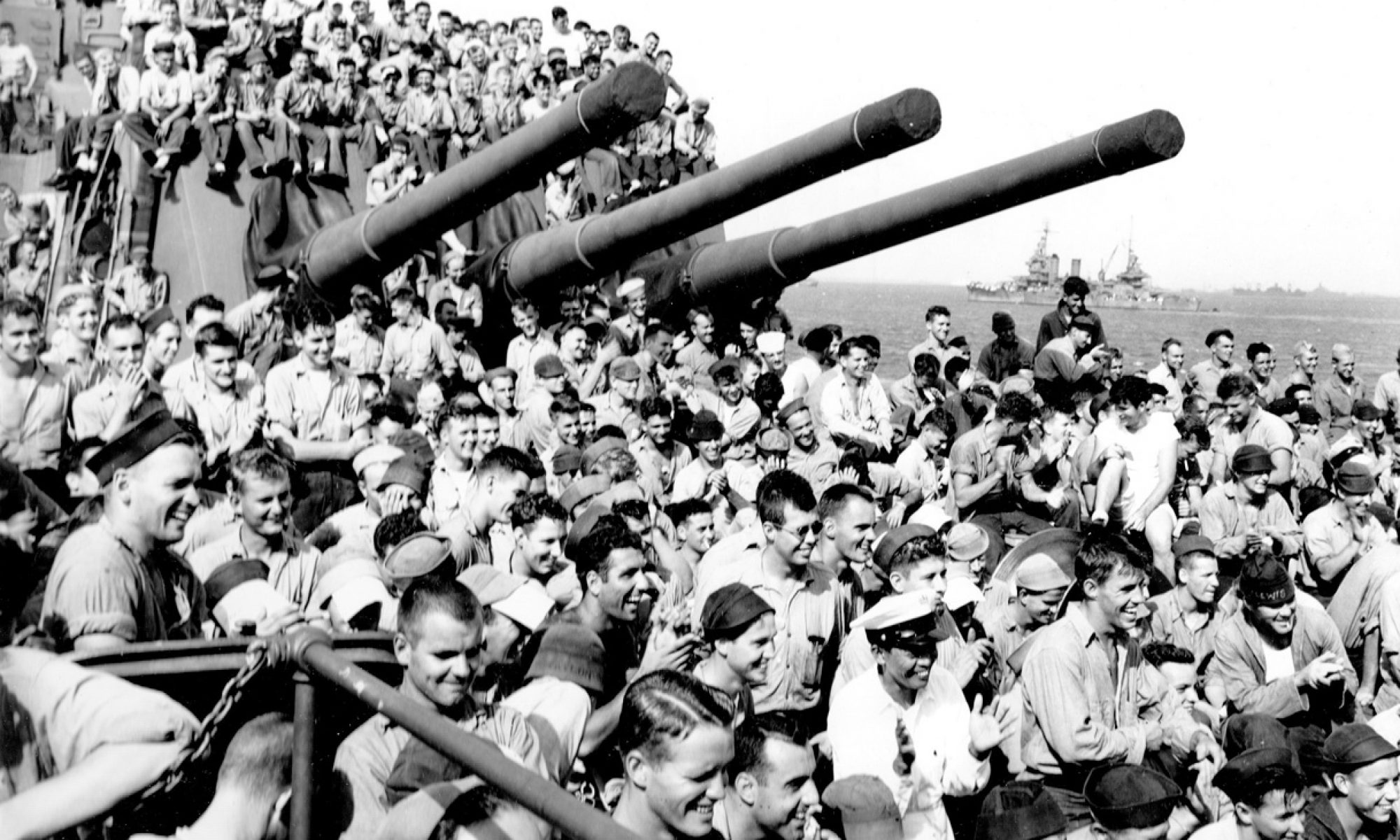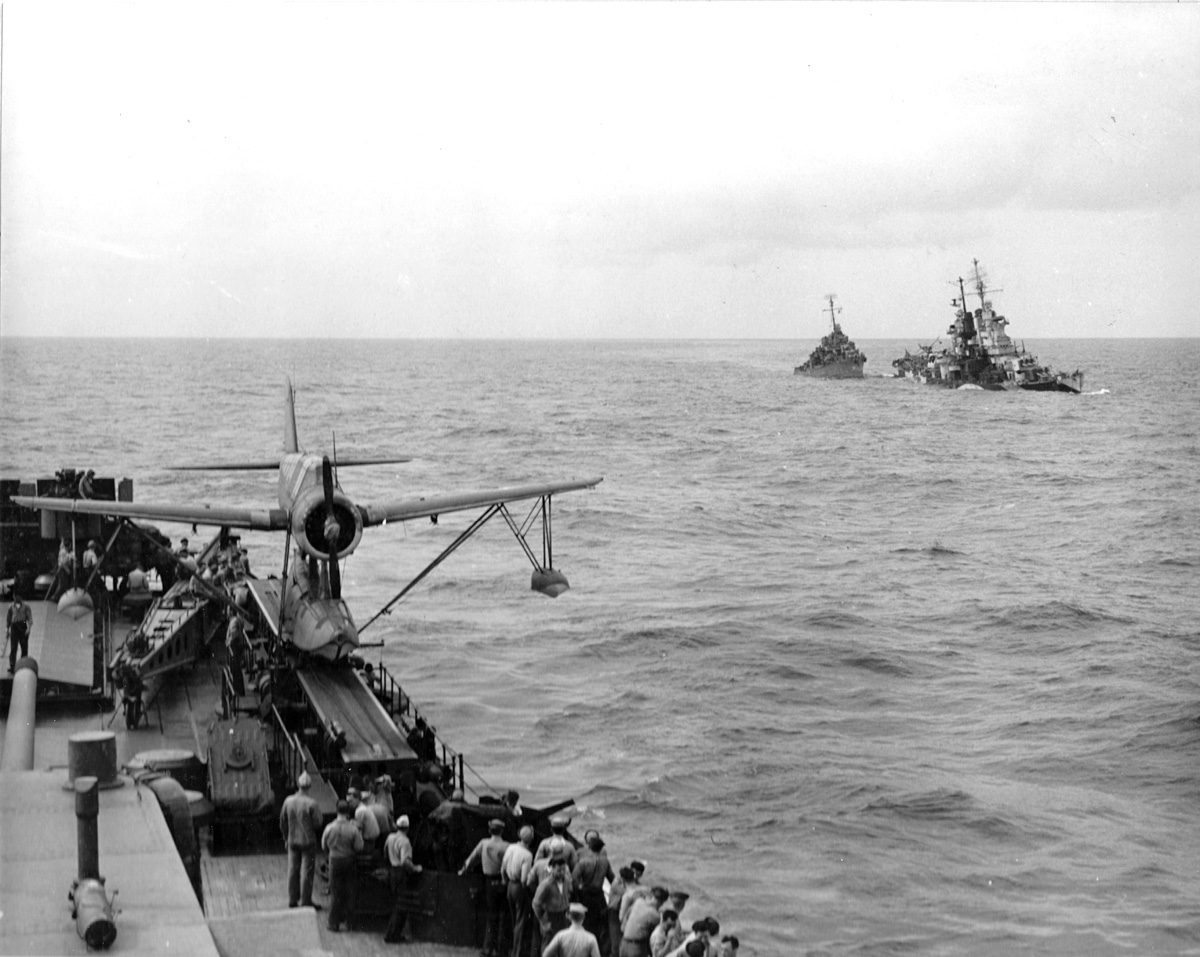10-14-14
George Pitts:
Oct 14 – 44: Early dawn found us at our battle stations waiting for them to close in again. Few of us were able to find time for a couple of winks of sleep last night. All day long they kept heckling us by sending in one plane here and there just to feel us out. Just about suppertime they came in force. Raids of 30 and 50 planes came in single groups. Our fighters repelled them until dark, then all hell broke loose again. Quite a few broke in our formation while others circled it and let loose with their torpedoes. A few missed our bow and one astern. The Houston (light cruiser) who took the Canberra’s place in the formation, took a torpedo near her fantail. She being a light cruiser couldn’t take it like a heavy one, and she was listing badly, word came over “TBS” that she was abandoning ship. So the destroyers close at hand started picking up survivors in the water. An hour later after things died down, the Houston said she was in condition for tow.
The task group commander told vagabond (Boston’s TBS call) to take the Houston in tow. So the Mighty Boston after shooting down two twin engine bombers set out to take the crippled Houston in tow. It is now 2220, so I think I’ll get some sleep. With the Houston in tow, we are only making a few knots an hour and we’ve a long way to go. Anything can happen from here on.
Frank Studenski:
October 14, 1944: This morning at 0600 hours planes took off to keep the Japs busy and prevent them from coming out to finish off the Canberra. The Canberra could be seen on the horizon under tow. Bogies were reported all morning, but none came in close enough to open fire. During the afternoon, the light cruiser Houston joined up with us. The Houston will take the position the Canberra held in the screen. We had about five air alerts during the day. Around 1500 hours several groups of bogies were about 40 or 50 miles away and a little after 1600 they started closing. Our fighters went out and broke up the group.
Then about 1815 hours our fighters were recovered at about the same time a large group of Jap planes appeared and began closing in. There was a lot of rain squalls around, the same as last night. This group of betties was coming in fast from dead ahead. The carriers were the first to open fire and then the Houston. The carriers got two planes and so did the Houston. Three more planes were seen to go down, several planes were swarming the cruiser. She avoided two torpedoes, but the third found its mark on the starboard side, amidships. The explosion could be seen from our ship. The carrier shot down another plane, which was burning dived for the carrier Wasp, part of the plane’s wing hit her bow. The Hornet hit one plane as it was going out, which turned around and made a dive for her, it just missed her stern. One betty flew over our bow dropping two torpedoes, both were wide of us. We opened fire on one plane off our port bow and shot her down. Off our port quarter, about ten planes were shot down by the ships. In the meantime the Houston was laying dead in the water, picking up men that were blown into the water, destroyers were also picking up men from the water.
She was hit pretty bad, both her engine rooms and fire rooms were flooded. She had a 14 degree list to starboard. Dead in the water, the whole ocean smelled with oil. We got the word that the Houston was abandoning ship and we were to go in and pick up survivors. There was still a lot of Jap planes around us. We opened fire again at a group that was closing in, but drove them off. A destroyer tried to come alongside to take off survivors, but the sea was too rough. Again we got the word that the Houston might be saved. We were requested to take the Houston in tow. There were some problems with passing the rigging over the Houston. Our stern was riding much higher than the Houston’s bow, we kept drifting away. No one on the bridge could see the stern on the Houston. It took a little over one hour to complete the rigging. We were finally able to move at about four knots.

